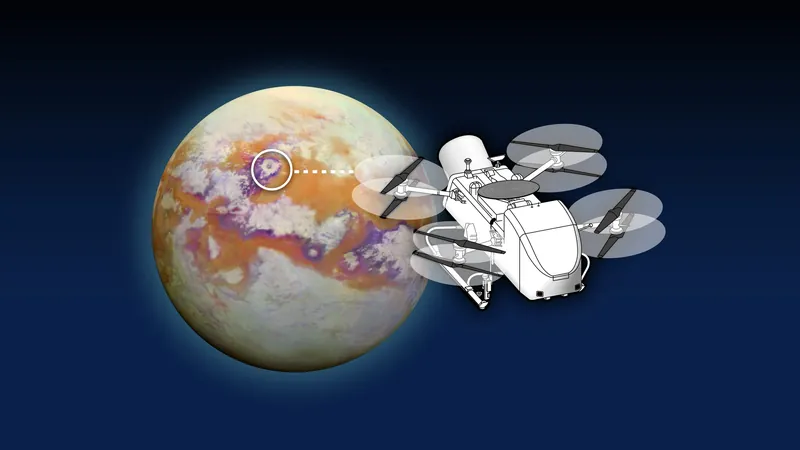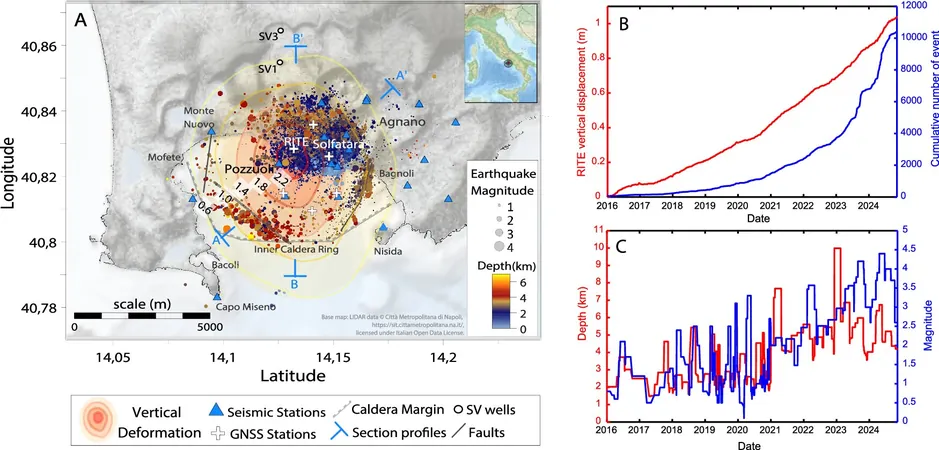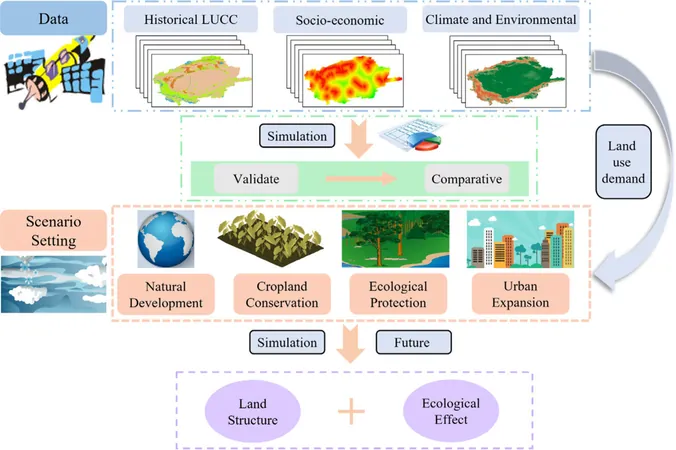
NASA's Dragonfly: Soaring into the Unknown of Saturn's Moon Titan
2025-05-11
Author: Wei Ling
NASA's groundbreaking Dragonfly drone has successfully completed a pivotal test, confirming its innovative design and paving the way for the next phase of its mission – full-scale construction. Managed by the Johns Hopkins Applied Physics Laboratory, this spectacular venture is set to launch in 2028 towards Titan, one of Saturn's most intriguing moons.
Despite encountering delays and budget overruns, with a total cost of $3.35 billion, Dragonfly aims to reach Titan in 2034. This ambitious mission will send the drone flying to an array of scientifically promising sites, investigating prebiotic chemical processes that may link Titan to early Earth.
What Awaits Dragonfly on Titan?
Equipped with state-of-the-art instruments such as a mass spectrometer, a neutron spectrometer, and a drill system, Dragonfly is geared to explore Titan's dense atmosphere and mysterious surface. NASA highlights that this mission will mark the first time a vehicle is flown for scientific purposes on another planetary body.
The Fascinating World of Titan
Titan is not just another moon; it's the largest of Saturn's 274 moons, located about 759 million miles from Earth. With its thick, orange-hued atmosphere and expansive methane lakes, Titan is reminiscent of early Earth, demonstrating complex features such as rivers and subsurface oceans.
Discovered in 1655 by Dutch astronomer Christiaan Huygens, Titan is half the size of Earth and exhibits seasonal changes similar to those of our planet, but on a much longer time scale due to Saturn's vast orbit.
The Journey Ahead: From Earth to Titan
Scheduled to launch on a Falcon Heavy rocket in July 2028, Dragonfly will take approximately six years to make its way to Titan, utilizing a gravity assist from Earth to boost its speed.
Landing and Exploration: A Leapfrog Strategy
Upon arrival, Dragonfly will carefully assess Titan's landscape and capture panoramic images, enabling scientists to select geological targets of interest. The drone will then embark on "leapfrog" flights to these spots, conducting scientific inquiries throughout its 2.7-year mission, with each flight covering about five miles.
Powered by eight electric motors and a rechargeable lithium-ion battery, Dragonfly's operations will be further bolstered by a Multi-Mission Radioisotope Thermoelectric Generator (MMRTG), which will recharge the drone during Titan's long nights.
Unlocking the Secrets of the Cosmos
As Thomas Zurbuchen, NASA's associate administrator for Science, aptly puts it: "Titan is unlike any other place in the solar system, and Dragonfly is like no other mission." By exploring this unique world rich in organic compounds, Dragonfly aims to unravel the mysteries of life's origins and our place in the universe.




 Brasil (PT)
Brasil (PT)
 Canada (EN)
Canada (EN)
 Chile (ES)
Chile (ES)
 Česko (CS)
Česko (CS)
 대한민국 (KO)
대한민국 (KO)
 España (ES)
España (ES)
 France (FR)
France (FR)
 Hong Kong (EN)
Hong Kong (EN)
 Italia (IT)
Italia (IT)
 日本 (JA)
日本 (JA)
 Magyarország (HU)
Magyarország (HU)
 Norge (NO)
Norge (NO)
 Polska (PL)
Polska (PL)
 Schweiz (DE)
Schweiz (DE)
 Singapore (EN)
Singapore (EN)
 Sverige (SV)
Sverige (SV)
 Suomi (FI)
Suomi (FI)
 Türkiye (TR)
Türkiye (TR)
 الإمارات العربية المتحدة (AR)
الإمارات العربية المتحدة (AR)